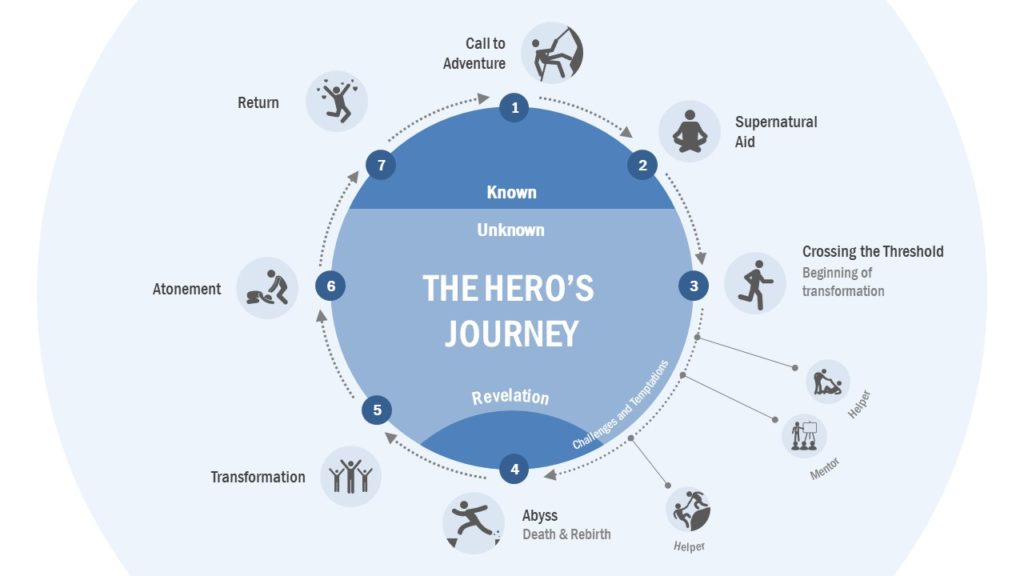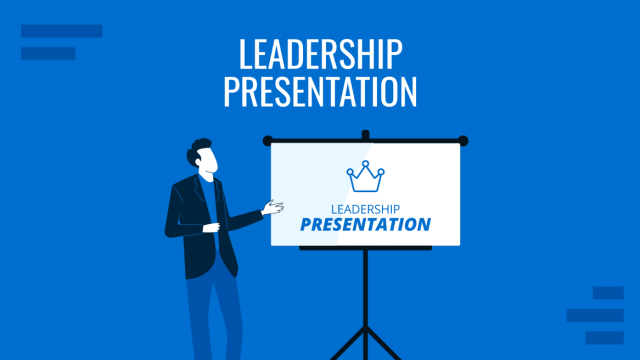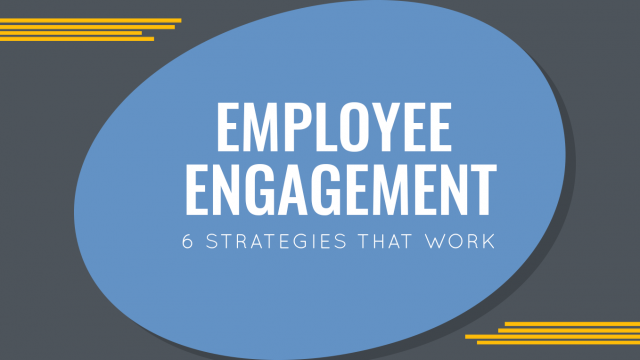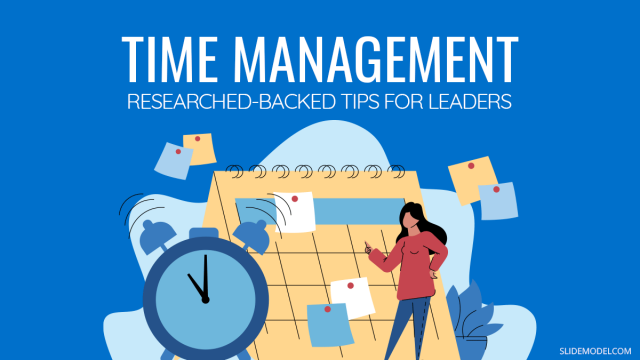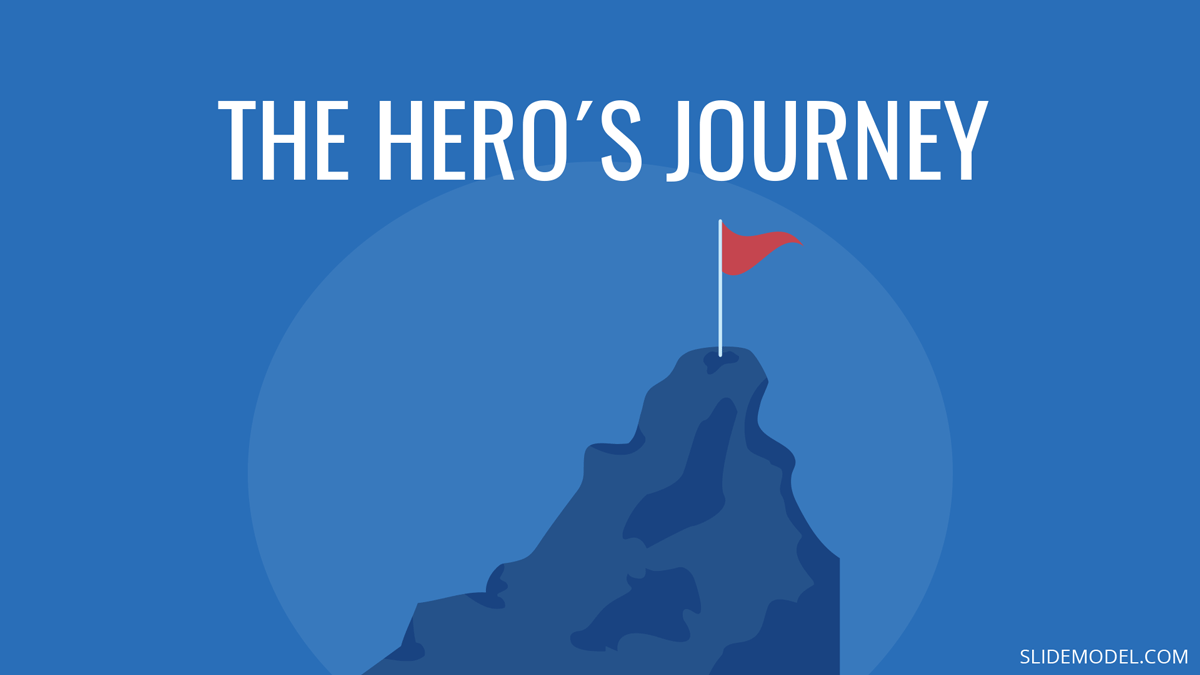
Every story has a hero! And every hero has a journey to achieve a goal, avert a crisis or beat incredible odds. Whether you’re a speaker looking to impress your audience with a PowerPoint presentation or someone aiming at self-improvement, the 12 Step Guide to The Hero’s Journey can help guide you towards awakening your inner hero.
What is the Hero’s Journey?
In 1871 anthropologist Edward Burnett Tylor pointed out some of the common aspects of how a hero is narrated in stories. Over the following years, there was much deliberation regarding the concept of the hero’s journey by various theorists.
Different philosophers have narrated this in various stages. A 20th-century American Professor of Literature, Joseph Campbell, gave 17 stages of the hero’s journey. Another professor, David Adams Leeming, and an American author, Phil Cousineau, gave their own version of 8 stages for the hero’s journey. More recently, author and Disney screenwriter Christopher Vogler came up with 12 stages to the hero’s journey.
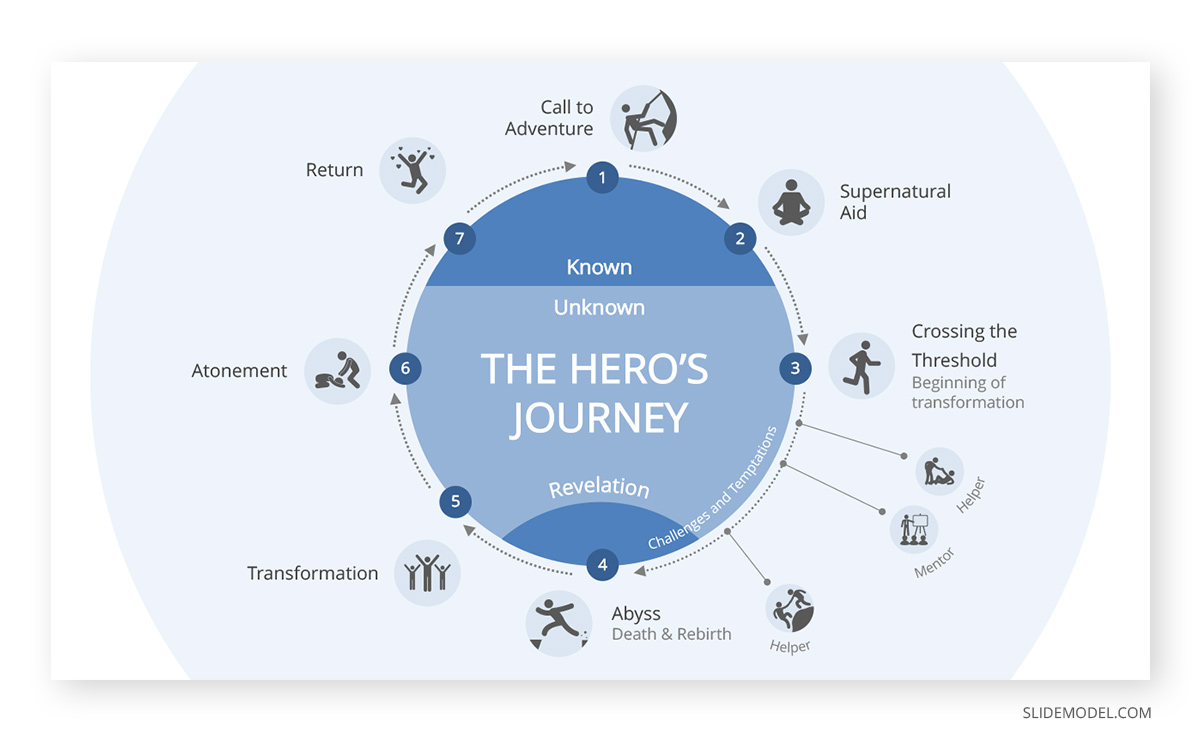
12 Steps of the Hero’s Journey
In what is to follow, we will dig deep into the 12 steps based on Christopher Vogler’s concept of the hero’s journey. Like all steps outlined by philosopher’s in the past, these 12 steps are also divided into three acts, namely; Departure, Initiation and Return. As an example for each stage, we will narrate the concept of the hero’s journey by comparing it to the famous fairytale, Jack and the Beanstalk.
Act 1: Departure
This Act consists of 5 stages: the ordinary world, call to adventure, refusal of the call, Meeting with the mentor, and crossing the first threshold.
1. Ordinary world
This is where the hero is living an oblivious life, not realizing his true destiny and the adventure ahead. This is a safe place for the hero, as he lives through his ordinary life. If we are to take the example of Jack from the story Jack and the beanstalk, it is the stage when he is living an ordinary life with his mother.
If you’re delivering a business presentation, an author, or even a teacher, you can use this phase to take your audience on a journey. Starting with something ordinary can be a great way to make your audience relate to the hero.
2. Call to adventure
This is the part when the hero is called to the adventure. You might have seen this happen in movies and novels in the form of a threat to the hero or his loved ones, an impending disaster that the hero learns about, or an incident that transforms the hero’s ordinary life with a sudden jolt. This is when Jack’s mother sends him to sell the cow due to the family’s financial woes, and he comes across the tempting offer to sell the cow for magical beans instead of money.
This is the part where the audience is likely to get excited and tense at the same time, where there is a sense of mystery as to how the hero might react to the situation.
3. Refusal of the call
Every hero has fears and doubts that hold them back, at least for a while. This is the part where the hero has doubts about his abilities. Many famous stories show the hero as demoralized and beaten down in this stage; it is the part where Jack is reluctant to sell the cow to the man offering him magical beans.
Refusal to call can be a great way to describe a success story to an audience. It can resonate with people’s fears and doubts and motivate them towards an exciting storyline that they will find motivating.
4. Meeting with the mentor
This is the part where the hero meets the mentor. In the case of Jack, it is the man who offers him magical beans for his cow. Meeting the mentor realizes one’s dreams, where the protagonist might receive an object of great importance, some advice, training, or motivation from his mentor.
When narrating a story, this is when a key character is meant to transform the life of the hero forever. In a presentation, this is the defining moment that needs to be identified and explained before an audience.
5. Crossing the threshold
This is the stage where Jack climbs the beanstalk, which appears after his mother throws the magical beans away, thinking that Jack was hoodwinked into selling the cow. At this stage, the hero is now ready to heed the call to adventure and departs on the amazing journey, completing the first act, i.e., Departure. This is usually the take-off point of any story and holds immense importance in keeping your audience intact.
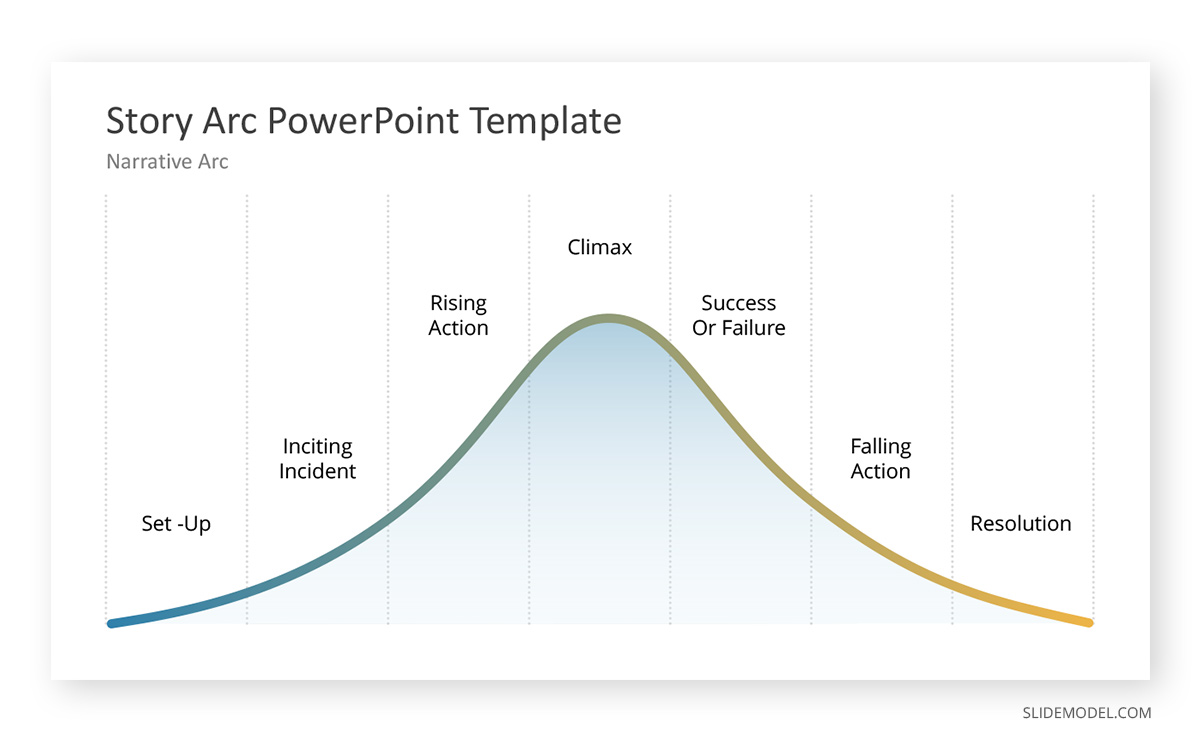
Act 2: Initiation
The second act consists of four vital stages, i.e. tests, allies and enemies, approach to the inmost cave, the ordeal, and finally, the reward.
6. Tests, allies and enemies
This is the part where the hero is confronted with challenges by his enemies. This is a time of trial and tribulations. The hero must decide who to trust in the wake of great obstacles and threats, testing his abilities to the bitter end.
Many presenters also use this stage to discuss the doom and gloom they or their organization faced amidst disastrous circumstances. This is where the audience is thrown into a spin, and the hero appears struggling amidst incredible odds. This is the moment when Jack finds the giant after he reaches the castle across the beanstalk.
7. Approach to the inmost cave
This represents a danger, confrontation with a foe, or an actual place where the hero must enter to face the true challenge. It is the call for the final battle. While entering the cave, the hero might once again face his fears and doubts, making the audience realize the hero’s plight. This is Jack’s face-off against the giant.
Many presenters use this stage to create sympathy for the protagonist’s struggle, be it a hero from an actual story, an organization that faced a crisis, or a historical figure under discussion confronted with incredible odds.
8. The ordeal
This is when the final battle occurs. When Jack must fight the giant, this is the moment of truth when the hero will be reborn through some ‘death,’ even if it is metaphorical. Facing all his fears, to achieve an incredible feat.
For a presenter, this is the extension of the inmost cave. Where the narrative of the final battle is laid out before an audience so that they might get a grip of the true sacrifices the hero has made to achieve something extraordinary. If you can sell your ordeal to the audience, your call to action will likely be well received.
9. Reward
This is when the hero achieves some success. Such as when Jack acquires the giant’s harp and golden eggs and runs for home as the giant chases him. This is when the hero has achieved a major goal and now must return home!
Whether you boast about an achievement or keep it short as a presenter will depend upon the topic, the mood of your audience, and the magnitude of the success achieved. The Reward completes the second act, where the Initiation phase is completed.
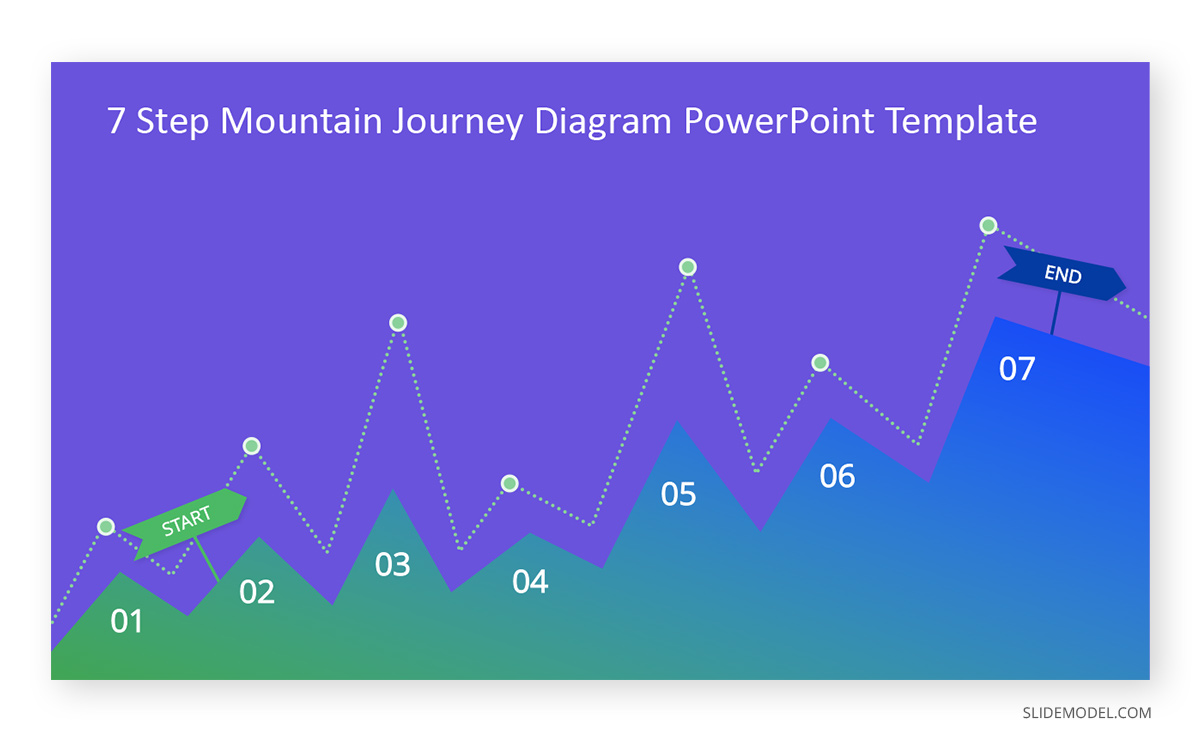
Act 3: Return
The Return symbolizes the effect of the achievement and what lies ahead for the hero. There would be new obstacles. However, the hero now must return home, even if it is symbolic. This act has three stages, i.e., the road back, the resurrection, and return with the elixir.
10. The road back
Going back home symbolizes the hero’s return with the reward. The hero might be returned with acclaim after achieving a great feat. It is Jack after climbing down from the beanstalk.
If you’re a presenter, the road back can be kept brief, as this is the part where your audience might be a bit tired and might be looking for a quick conclusion.
11. The resurrection
This is when the hero is reborn. The hero must face a major threat, which is often a face-off with death itself. This is the part when the giant chases Jack down the beanstalk, as Jack climbs down.
If you want to stretch out the final battle for your audience, you might want to keep some of the previous sections short during a presentation. While people read novels at a time of their convenience, the audience sitting in a hall might not be all that patient. Nonetheless, the final battle is crucial and must be played out to the satisfaction of the audience.
12. Return with the elixir
This is when the hero achieves success. Jack acquires the giant’s harp and golden eggs after defeating him by cutting the tree. In the story, the giant is never seen again, which is a reference to the giant being slain. After this stage, the hero is no longer the same. The enemy has been defeated, the challenge achieved, and death has been beaten, one way or the other. The reward is the ultimate goal of the hero that is achieved in some form. Some stories might see the hero dying in the end after achieving a goal. This might include slaying a tyrant, winning a war, or inspiring a revolution. In Jack and the Beanstalk, it is Jack living happily ever after with his mother.
Return with the elixir is the satisfaction that the audience desire, so to speak. Everyone likes a story where the protagonist achieves something great. As a presenter, you can discuss the protagonist’s success to show the audience how great the protagonist achieved a feat in the wake of hard work, sacrifice, and perseverance. Reward also concludes the final stage of the second act, and now the hero must return.
You will require weaving in your call to action with this stage as a presenter to use the inspirational story to achieve your final goal. The same can be done by a teacher, a student during a class presentation, or someone looking to write an inspirational story with a moral at the end to inspire people with an idea.
When working with the hero´s journey
Final Words
The hero’s journey reflects myths and legends and human nature, and the human will achieve something extraordinary. If you’re someone looking to take your audience on a journey through a presentation, story, video, or even a class lecture or school presentation, you can use the 12 step guide to create a compelling story for your audience.
If you’re someone looking to use the hero’s journey as a guide for self-improvement, you can also use this as a guide as to what phase of your life was the most impactful, what decisions you made, and how you might improve your decision making.
Finally, if you´re looking into the hero´s journey because you are creating content for marketing purposes, or even defining storyboards to understand users better in tech products, hopefully this article will have been helpful for you.
